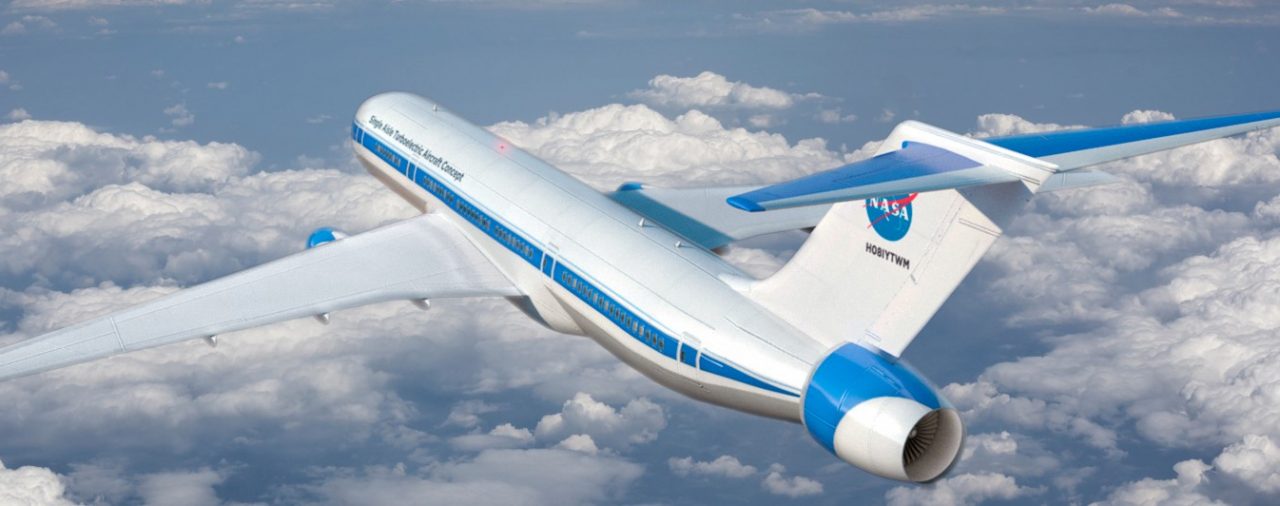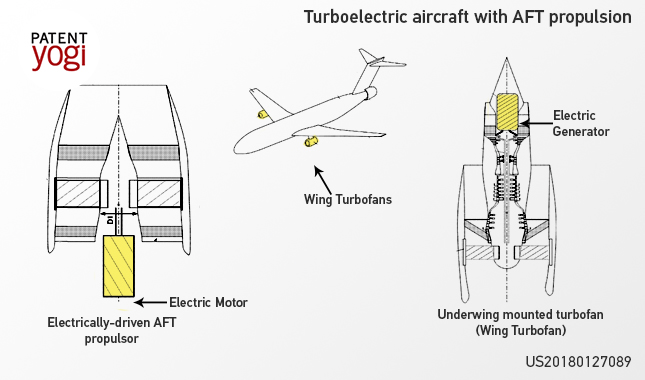Airplanes have evolved from low-powered planes made up of wood to sleek to high-powered planes made up of much lighter materials like aluminum.
A major problem with the present aircraft technology is the consumption of jet fuel in huge quantities. According to Boeing’s website, a Boeing 737 burns approximately 3000 liters of fuel in an hour. That means, for a 10-hour flight, the aircraft may consume approximately 30,000 liters of jet fuel. In order to reduce fuel consumption, emission, and noise from the aircraft, NASA has developed turboelectric aircraft technology.
PATENT TECHNOLOGY
The turboelectric propulsion architecture developed by NASA includes a turbomachinery coupled to one or more generators. The turbomachinery includes two underwings mounted turbofans (wing turbofans). Attached to each wing turbofan is a generator that extracts mechanical energy from a fan shaft and converts it into electrical energy. This electrical energy is supplied to an electrically-driven aft propulsor through electric wires. The electrically-driven aft propulsor, also known as rear propulsor, is placed at the rear end of the aircraft. Rear propulsor consist of an electric motor coupled to a propeller that produces the required thrust. Therefore, the turboelectric aircraft developed by NASA has more than one thrust-producing element (wing turbofans and rear propulsor).
The presence of more than one thrust-producing element allows a more efficient operation of the aircraft by controlling the distribution of power among the thrust-producing elements. The power is distributed in such a way that both the thrust-producing elements operate at their peak efficiencies while fulfilling the thrust requirement. Further, due to the increased efficiency of the propulsor, the diameter of the wing turbofans can be reduced, helping the aircraft achieve an overall lower weight.
ADVANTAGES
The turboelectric aircraft technology helps in reducing fuel consumption, carbon emissions and overall noise in the aircraft. This technology is essential as air travel becomes more popular.
WHAT IS YOUR TAKE?
So what do you think about the turboelectric aircraft technology by NASA? Let us know in the comment section.
Publication Number: 20180127089
Patent Title: Turboelectric Aircraft with Aft Propulsion
Publication date: 4 Nov 2016
Filing date: 10 May 2018
Inventors: Jason R. Welstead; James L. Felder
Original Assignee: U.S.A. as represented by the Administrator of the National Aeronautics and Space Administration



